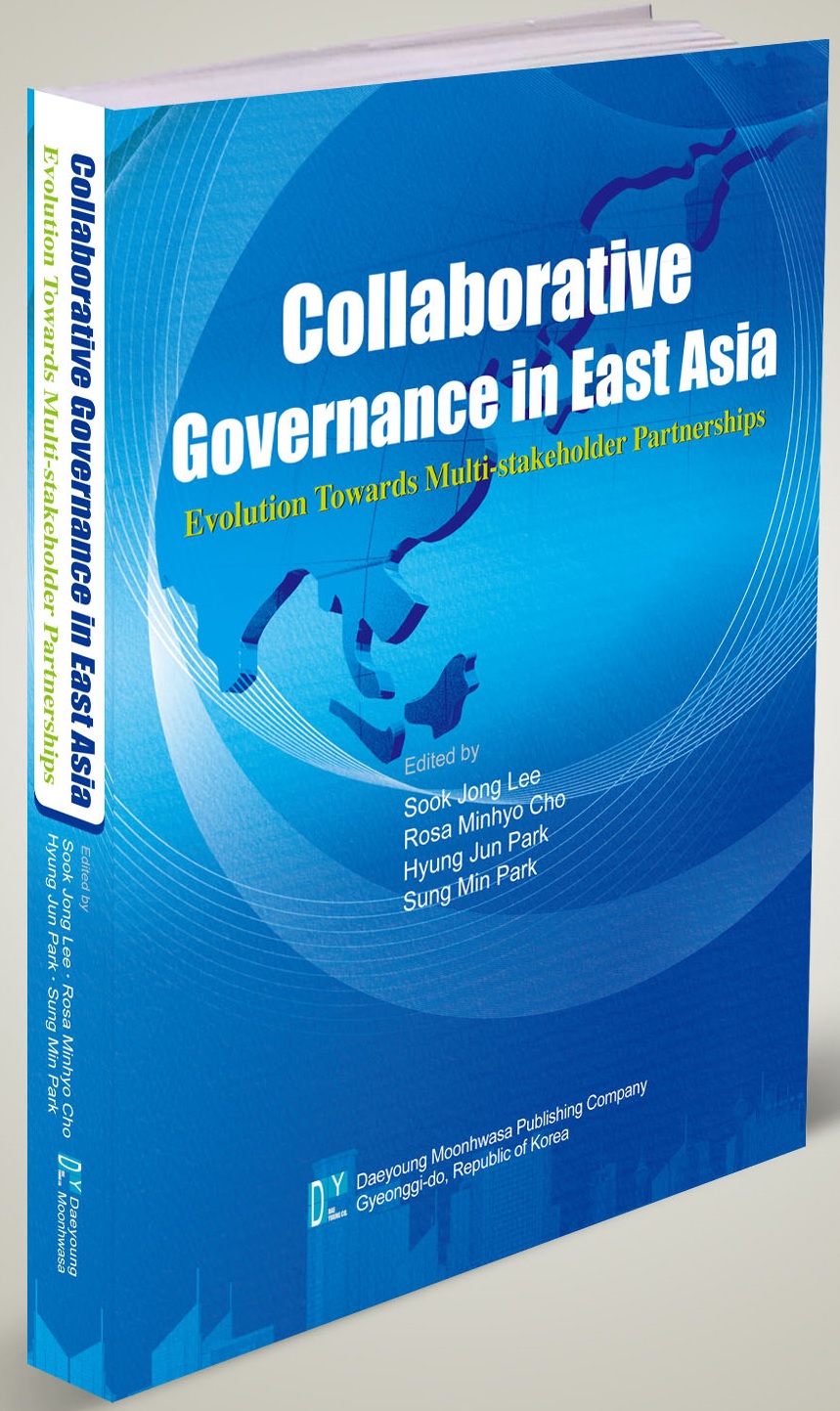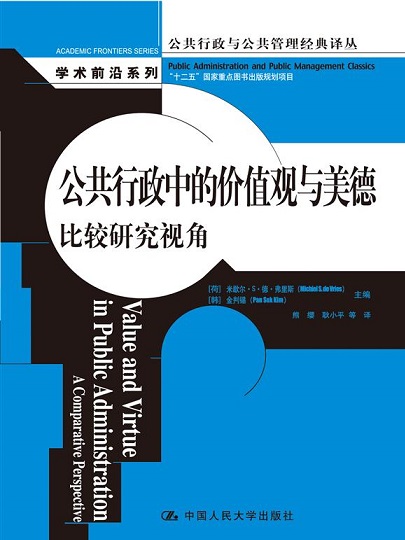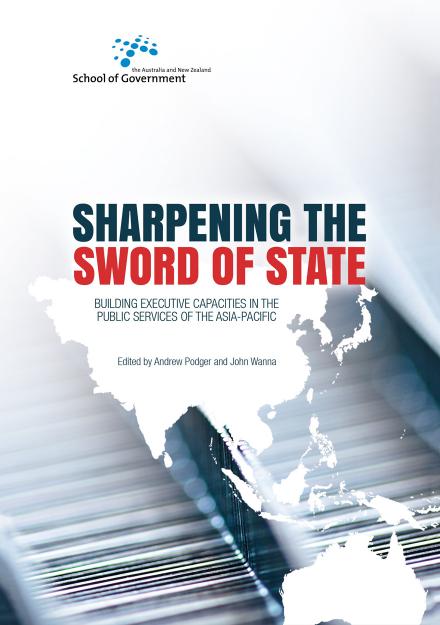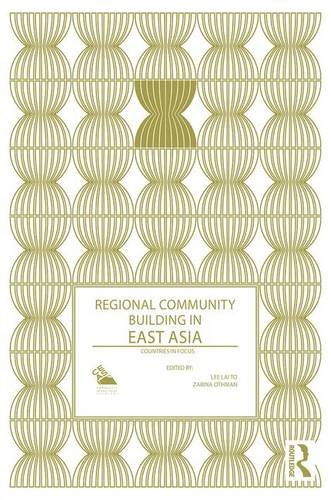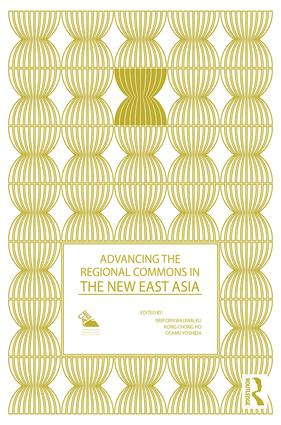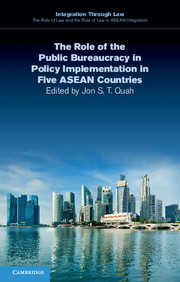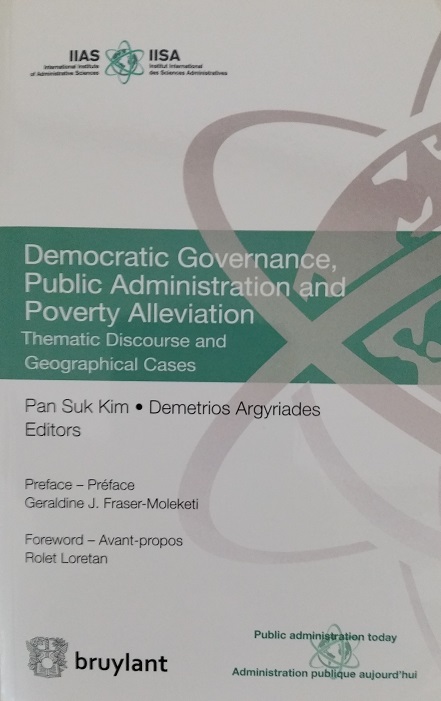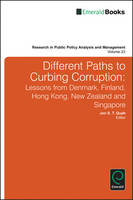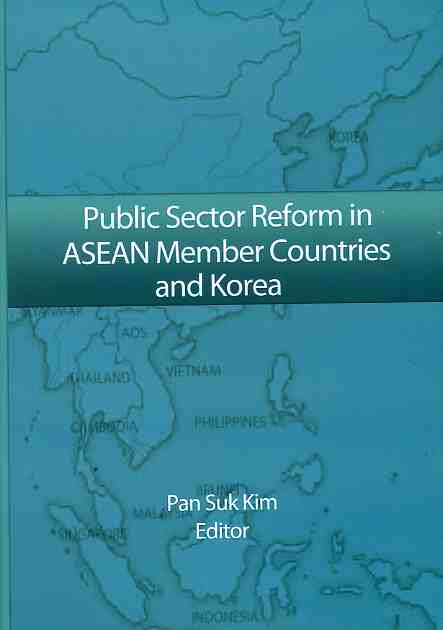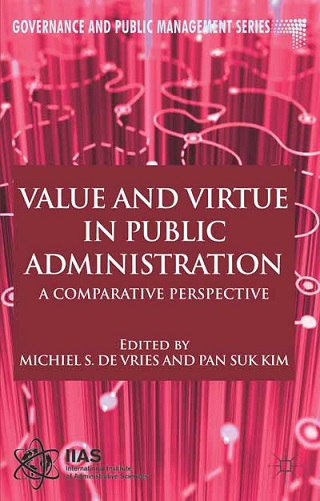-
Collaborative Governance in East Asia: Evolution Towards Multi-stakeholder Partnerships
In public administration and public policy studies, collaborative governance has become a buzzword as complex, modern social problems demand greater cooperative efforts and collective intelligence from both public and private sector stakeholders. Despite the rise in research on collaborative governance, however, there has been a dearth of related studies on East Asian countries. This book aims to fill this gap and inspire comparative studies that attempt to understand how the region is coping with the increasing challenges of managing social problems.The role of government in public governance has been recognized as a strong one in East Asia due to the state-led development of many countries in the region and the historical legacy of meritocratic bureaucracy intervening in social issues. However, several contributing factors have weakened the effectiveness of top-down rational planning and policy implementation, especially that of central governments, over the last few decades. First, contemporary social problems and public issues are often poorly predicted and diagnosed by bureaucracies. Natural disasters and pandemic diseases are good examples. The current COVID-19 pandemic has changed our lives dramatically, revealing which countries have the resiliency and effective public-private cooperation necessary to win the fight against this deadly virus. The second factor is the limited resources and authority of central governments. Most public programs related to the environment, transportation, and education are locally implemented. Central governments are too far removed to grasp the issues of local communities, while local governments have better information and resources that they can mobilize. Power devolution from central to local governments is an ongoing process in East Asia as the principle of subsidiarity gains wider acceptance. The third is the increasing demand for citizen participation in the public policy process. Increasing awareness of citizen rights in governing a country are driving more people to express their opinions, organize their interests, and demand representation in the policy decision-making process. Democratization is certainly contributing to this awareness and increased digital connectivity aids people to participate. Many public programs face difficulty in the implementation phase if civil society organizations or local resident groups are not properly consulted. Many governments have provided participatory mechanisms to allow policy input from citizens in order to improve policy effectiveness and legitimacy.The demand for public-private collaboration tends to be higher in places with a greater number of social conflicts. In this sense, conflict and collaboration are two sides of the same coin in governance studies. In order to understand social conflict and develop a dynamic and resilient collaboration model, several scholars at Sungkyunkwan University’s Graduate School of Governance launched a series of research papers with funding from the National Research Foundation of South Korea. This research network quickly expanded to include fourteen professors and post-doctoral researchers from eight universities. In order to understand how citizens view social problems, take action to resolve them, and rate their government conflict management systems, the East Asia Collaboration Center (EACC) inside Sungkyunkwan University conducted surveys in 2018 and 2019 in the five East Asian countries of Indonesia, Japan, South Korea, Taiwan, and Thailand. Two chapters of this book are dedicated to analyzing this survey data. This book itself is also part of the Center’s collective research efforts. We invited several East Asian scholars working on collaborative governance in East Asia to contribute to this book. The initial workshop to facilitate our collaboration was held on Jeju Island in South Korea from August 21 to 23 in 2019. We invited more scholars from the network of the Asian Association for Public Administration to contribute, and ultimately were able to include eleven chapters written by scholars from China, Indonesia, Japan, the Philippines, South Korea, Taiwan, and Thailand in this book.The chapters are divided into three parts for the sake of convenience as they address some overlapping problems. Lee and Kim’s chapter reveals the interesting finding that people who have participated in public conflict resolution attempts with their government are discouraged from participating in similar future attempts. Further study is needed into why engaging with the government to solve social conflict has such a negative impact on the willingness of the public to participate in conflict resolution. Ugaddan, Yang, and Park find that people who feel positively about their government’s conflict management methods are also less likely to perceive that they are in conflict with the government. They also find that trust in government has a significant moderating effect on this relationship. Yoo and Cho’s chapter compares the deliberative polling that was introduced in Japan and South Korea on nuclear energy policy. They argue that while both polls were meant to encourage citizen participation in reducing the number of nuclear power plants, they had different, limited impacts as they lacked the legal grounds necessary for enforcement.Part II contains examples of collaborative governance at the local government level. Brillantes Jr. and Ruiz introduce several successful cases of local government programs in the Philippines. They identify leadership, public participation, multisectoral cooperation, media and information dissemination, and support from international institutions as the major factors supporting innovative collaborative governance. Situating the collaborative governance framework on the relations between local governments and residents, Kikuchi’s chapter examines a new waste management system that resulted from improved collaboration between the two. He argues that new policy tools such as evidence-based policy making, which helps the public make informed decisions, and randomized control trials, which allow for more effective evaluation of policy impacts, are contributing to the collaborative participation of community residents in recycling programs run by local governments. The chapter by Lee, Cho, and Park analyzes the Korean energy policy making interaction between central government ministries, local governments, public enterprises, and civil society leaders. They argue that energy governance among these multiple stakeholders has evolved from a hierarchical form to a participatory form that provides more space for local governments and civil society leaders. Nonetheless, they point out that policy coordination among ministries and trust building between public and private stakeholders necessary for successful collaborative governance are still lacking. The chapter by Sun, Lin, and Phan offers an interesting analysis of how the views individuals hold towards democracy affect their attitudes regarding a local placemaking program in Taiwan. They identify five democratic subjectivities using a Q methodology.Part III addresses inter-governmental or inter-agency collaborative governance. The two chapters on Chinese collaborative governance both focus on the cooperation patterns of local governments through the lens of collective action theory. The chapter by Wu, Liu, Chen, and Qin examines the collaborative governance mechanisms to prevent and control air pollution in the Yangtze River Delta. They highlight both the structural mechanism of gathering the relevant actors and providing a platform for information sharing, decision-making, implementation, and evaluation as well as the procedural mechanism of determining tasks, formulating specific programs, promoting policy implementation, and ensuring the effectiveness of each policy. They argue that China needs to further develop its procedural mechanism by building trust between local governments. Suo, Kan, Ma, and Chen analyze the bilateral agreements of eight provincial governments in the Pan Pearl River Delta region, dividing them into four groups using the two criteria of willingness to cooperate and risk of cooperation. They find that many local governments view cooperation with other local governments as risky, even as the majority intend to cooperate. Prasojo and Abubakar examine collaborative governance among the law enforcement agencies of Indonesia in prosecuting corruption. Comparing the strategies of cooperation, competition, conflict, non-use of cooperation, and the absence of relationship, they find that non-use of cooperation is the dominant relationship type, and conclude that this is due to the institutional design which maximizes each agency’s authority to combat corruption. Kamolvej and Luangprapat’s chapter on Thailand, on the other hand, describes more cooperative inter-agency risk management collaboration in combating a tsunami, flooding, and COVID-19. However, despite the active response of the three administrative layers of central, provincial, and local government to disasters under the focal agency of Disaster Prevention and Mitigation, agency coordination and adherence to international standards still leave much to be desired for the successful management of disaster risks.
2020.07.20 -
Value and Virtue in Public Administration (公共行政中的價値觀與美德: 比較硏究視覺)
De Vries, Michiel and Kim, Pan Suk. 2014. Value and Virtue in Public Administration: A Comparative Perspective. London: Palgrave Macmillan, paperback in 2014: ISBN 9781137387981. This book was translated into Chinese and published by Renmin University Press in Beijing, China in 2014.米歇尔•S•德•弗里斯(Michiel S. de Vries)and 金判锡(Kim, Pan Suk). 公共行政中的價値觀與美德: 比較硏究視覺. 北京: 人民大学出版社. ISBN: 9787300198941.http://www.crup.com.cn/Item/126430.aspx.
2016.12.09 -
Sharpening the Sword of State: Building executive capacities in the public services of the Asia-Pacific
☞ This volume (Sharpening the Sword of State: Building executive capacities in the public services of the Asia-Pacific) explores the various ways in which 10 jurisdictions in the Asia-Pacific enhance their administrative capabilities through training and executive development. It traces how modern governments across this region look to develop their public services and public sector organisations in the face of rapid global change. For many governments there is a delicate balance between the public interest in promoting change and capacity enhancement across the public service, and the temptation to micro-manage agencies and be complacent about challenging the status quo. There is a recognition in the countries studied that training and executive development is a crucial investment in human capital but is also couched in a much wider context of public service recruitment, patterns of entry and retention, promotion, executive appointment and career development. This empirical volume, authored by academics and practitioners, is one of the first to chart these comparative differences and provide fresh perspectives to enable learning from international experiences.☞ Podger, Andrew and Wanna, John. 2016. Sharpening the Sword of State: Building executive capacities in the public services of the Asia-Pacific,Canberra, Australia: Australian National University Press. ISBN: 9781760460723.☞http://press.anu.edu.au/publications/series/australia-and-new-zealand-school-government-anzsog/sharpening-sword-state
2016.12.09 -
Regional Community Building in East Asia: Countries in Focus
To, Lee Lai and Othman, Zarina (eds.), Regional Community Building in East Asia: Countries in Focus, London: Routledge (350 pages). ISBN-10: 1138640433 and ISBN-13: 978-1138640436.This volume is a collection of papers written by nationals of the respective country in ASEAN and Northeast Asia. Unlike other works written by scholars outside ASEAN or East Asia, it offers an insider’s point of view of the 10 ASEAN states, China, Japan and South Korea on regional community building. While a nationalist perspective may permeate throughout the study, it is also clear that pursuing regional cooperation is considered to be important by the respective author, denoting the non-exclusivity between nationalism and regionalism and the mutual reinforcement of the two.Professor Pan Suk Kim wrote a chapter entitled “Major Perspectives of South Korea and ASEAN Cooperation” in this book. This book will provide readers with many suggestions and hints in prospecting the future of New East Asia in the era of Asia.https://www.routledge.com/Regional-Community-Building-in-East-Asia-Countries-in-Focus/To-Othman/p/book/9781138640436
2016.08.25 -
Advancing the Regional Commons in the New East Asia
Wajjwalku, Siriporn; Ho, Kong Chong; and Yoshida, Osamu. (2016). Advancing the Regional Commons in the New East Asia. London: Routledge. ISBN-10: 1138892505, ISBN-13: 978-1138892507.This book is a product of cooperation among the academic members of the Association of South East Asian Nations (ASEAN) and ASEAN Plus Three (APT) including China, Japan, and Korea. Advancing the Regional Commons in the New East Asia highlights a number of interests which members of ASEAN and Plus Three countries collectively recognize. This set of common interests includes not only economic development but also social development. Leading scholars in the region cooperate with each other to tackle regional key issues and challenges, including food security, energy security, the problem of illicit drugs, transnational migration, the cross-national scheme of education in the region, and ASEAN cooperation on marine environment.Professor Pan Suk Kim and his accociate wrote a chapter entitled “Transnational migration in East Asia: the evolving migration policy in South Korea and its implications” in this book. This book will provide readers with many suggestions and hints in prospecting the future of New East Asia. This is a must read book for all who are interested in ASEAN, APT and East Asian regionalism.https://www.routledge.com/products/9781138892507
2016.04.21 -
The Role of the Public Bureaucracy in Policy Implementation in Five ASEAN Countries edited by Jon Quah
The Role of the Public Bureaucracy in Policy Implementation in Five ASEAN Countries ( Indonesia, Malaysia, the Philippines, Singapore and Vietnam) edited by Jon Quah in Singapore will be published by Cambridge University Press in December of 2015.It highlights the importance of the policy context, especially the commitment of the government in allocating the necessary resources and the support of the implementers, as well as the public bureaucracy's effectiveness, as the critical factors responsible for effective policy implementation. The comparative analysis shows that the public bureaucracies in Singapore and Malaysia are more effective in policy implementation than their counterparts in Indonesia, the Philippines and Vietnam because of their favourable policy contexts and higher level of organizational effectiveness.Details of the contents of the book are available at www.cambridge.org/us/academic/subjects/law/public-international-law/role-public-bureaucracy-policy-implementation-five-asean-countries.
2015.11.17 -
Democratic Governance, Public Administration and Poverty Alleviation
New Book:Kim, Pan Suk and Argyriades, Demetrios (eds.). 2015. Democratic Governance, Public Administration and Poverty Alleviation: Thematic Discourse and Geographical Cases. Brussels, Belgium: Bruylant Publishing Company. http://en.bruylant.larciergroup.com/titres/132687_/democratic-governance-public-administration-and-poverty-alleviation.html.Book review article by Derry Ormond: Pan Suk Kim and Demetrios Argyriades (ed.). (2015). Democratic Governance, Public Administration and Poverty Alleviation: Thematic Discourse and Geographical Cases, International Review of Administrative Sciences 81 (4): 858.http://ras.sagepub.com/content/81/4/858.full.pdf+html.
2015.07.21 -
Quah, Jon S.T. 2013. Different Paths to Curbing Corruption
Quah, Jon S.T. 2011. Curbing Corruption in Asian Countries: An Impossible Dream? Singapore: Institute of Southeast Asian Studies.Quah, Jon S.T. (ed.). 2013. Different Paths to Curbing Corruption Lessons from Denmark, Finland, Hong Kong SAR of China, New Zealand and Singapore. Singapore: Emerald Group Publishing Limited.Synopsis:Corruption is a serious problem in many countries around the world, according to Transparency International's 2012 Corruption Perceptions Index (CPI) and the World Bank's 2011 Control of Corruption governance indicator. However, some countries/jurisdictions like New Zealand, Denmark, Finland, Singapore and Hong Kong SAR of China, have consistently performed better on these two indicators than other countries. This book seeks to explain why these five countries/jurisdictions have succeeded in combating corruption; and identify the lessons which other countries can learn from these successful experiences.
2014.09.01 -
English Public Administration Books on ASEAN Member Countries and South Korea
Three books have been published in English:Public Administration and Public Governance in ASEAN Member Countries and South Korea, 2009Civil Service System and Civil Service Reform in ASEAN Member Countries and South Korea, 2010Public Sector Reform in ASEAN Member Countries and South Korea, 2011These books are available athttp://www.seoulselection.com/bookstore/default/product_search.php?search=asean (Seoul Selection: Online English bookshop in Seoul, South Korea)www.dymbook.co.kr (Daeyoung Moonhwasa Publishing Company in Seoul, South Korea)
2014.09.01 -
Value and Virtue in Public Administration, edited by Michiel de Vries and Pan Suk Kim
Value and Virtue in Public Administration: A Comparative Perspectiveedited by Michiel de Vries and Pan Suk KimPalgrave Macmillan in 2011 (hardcover), 2014 (paperback ebook)Access available at http://www.palgrave.com/page/detail/Value-and-Virtue-in-Public-Administration/?K=9781137387981Its Chinese edition was published by the Renmin University of China Press in 2014http://www.crup.com.cn/Item/126430.aspx.The aim of this book is to clarify the ground on which public service scholars, practitioners and advisers stand in relation to values and virtues in public administration. It explores assumptions, the unspoken and unexamined things that are taken for granted in the field of serving the public good. Accordingly, Values and Virtues in Public Administration gives an account of the recent developments and progress in public sector management and public service. It describes the progress made in the discipline of public administration, in theories related to public administration and in the practice of public administration in tackling the questions surrounding values and virtues. These trends, descriptions, theories and comparisons make it possible to answer the question of how administrative ethics vary and what this variance depends upon. Featuring contributions from scholars in several different disciplines and in-depth case studies, the book concludes that under New Public Management instrumental values and consequential ethics have become dominant and more fundamental values have been neglected.
2014.09.01 -
Books written by Asian scholars
Books on Asia (For Asian book authors: if you have published books on public administration, please send your book information to the AAPA Secretary anytime at aapa@yonsei.ac.kr)Bowornwathana, Bidhya and Wescott, Clay (eds). 2008. Comparative Governance Reform in Asia. UK: Emerald Group Publishing Limited.Cheung, Anthony B. L. (ed). 2005. Public Service Reform in East Asia: Reform Issues and Challenges in Japan, Korea, Singapore and Hong Kong SAR of China. Hong Kong SAR of China: Chinese University Press.De Vries, Michiel and Kim, Pan Suk. (eds.). 2011. Value and Virtue in Public Administration: A Comparative Perspective. Hampshire, UK: Palgrave Macmillan.Kim, Bun W. and Kim, Pan Suk. 1999. Korean Public Administration: Managing the Uneven Development. Seoul, South Korea: Hollym.Kim, Pan Suk (ed). 2009. Public Administration and Public Governance in ASEAN Member Countries and South Korea. Seoul, South Korea: Daeyoung-Moonhwasa Publishing Company.Kim, Pan Suk (ed). 2010. Civil Service System and Civil Service Reform in ASEAN Member Countries and South Korea. Seoul, South Korea: Daeyoung-Moonhwasa Publishing Company.Kim, Pan Suk (ed). 2011. Public Sector Reform in ASEAN Member Countries and South Korea. Seoul, South Korea: Daeyoung-Moonhwasa Publishing Company.Nakamura, Akira (ed). 2004. Comparative Studies of Public Administration VIII: Public Reform, Policy Change, and New Public Management? From the Asia and Pacific Perspective. Tokyo: EROPA (Eastern Regional Organization for Public Administration) Local Government Center.Quah, Jon S. T. 2013. Curbing Corruption in Asian Countries: An Impossible Dream? Singapore: Institute of Southeast Asian Studies.
2013.03.06




